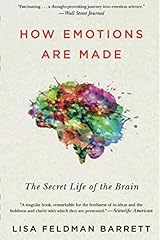Emotions
Modeling Emotions: Feeling, Context, Experience:
Recent research in Neuroscience, Cognitive Science, and Computer Science have transformed the understanding of brain, body science.
Theory of Constructed Emotions:
A scientific theory to explain the experience and perception of emotion. This theory was proposed by Lisa Feldman Barrett to resolve the "emotion paradox," which has perplexed emotion researchers for decades. Wikipedia
"In every waking moment, your brain uses past experience, organized as concepts, to guide your actions and give your sensations meaning. When the concepts involved are emotion concepts, your brain constructs instances of emotion."
Joseph E. LeDoux "Feelings: What Are They & How Does the Brain Make Them?" Joseph E. LeDoux (PDF)
Rational thought has always been treated as a product of the mind, and emotions were traditionally viewed as belonging to the body.
Feeling our Emotions: The Difference between Feelings and Emotions. A. Damasio, Scientific American
Damasio: In everyday language we often use the terms interchangeably. This shows how closely connected emotions are with feelings. But for neuroscience, emotions are more or less the complex reactions the body has to certain stimuli. When we are afraid of something, our hearts begin to race, our mouths become dry, our skin turns pale and our muscles contract. This emotional reaction occurs automatically and unconsciously. Feelings occur after we become aware in our brain of such physical changes; only then do we experience the feeling of fear.
Recommended Books:
How Emotions are Made: Lisa Barrett

Lisa Barrett argues that we construct our emotions, based on social context, personal experience, and situational goals. This suggests that individuals can modify emotions to improve well-being.
Positive Emotions vs Pleasure:
pleasure tends to narrow our attention and draws us inward to our own personal desires and needs.
In contrast to pleasure, positive emotions draw us outward. They broaden our attention and open our hearts and minds to possibilities.
As we mentioned in our previous post, those who experience more positive emotions tend to be more optimistic, resilient and accepting. Positive emotions enable us to reach out and connect with others, and forge stronger bonds. When experiencing positive emotions such as curiosity, awe and gratitude, for example, we are more creative and are able to come up with solutions to problems rather than when we are solely focusing on pleasure. We can understand how this openness can help us in our relationships.
Further, positive emotions aren’t just good for us in the moment; they also have long-term effects.
While emotional states are fleeting, Fredrickson’s groundbreaking research found positive emotions build psychological and social resources for the future. They can help us get to know the world and others in new ways. For example, when we are feeling curious or joyful, we tend to be more playful and creative with a desire to explore the world and learn more about our loved ones.
Last updated
Was this helpful?